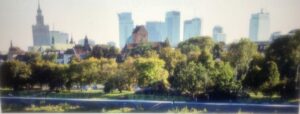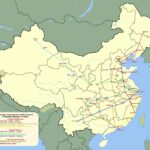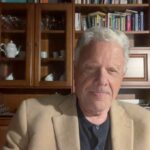Impressions from a 2500 km car trip Riga-Milan
Six o’clock dark morning in Riga, trapped in the new big ring system of highway around the city, no one around but I decided to follow the Japanese navigator of my Toyota, which instead of simply crossing old city, put me along the new ring, crossing two times the Daugava river and at least moving toward Lithuania border. So I may understand better the infrastructure new investments and support the EU helping for that. Latvia offers me a wonderful sunrise on my left, the sun red ball exploding from the large plain and switching off the show of autumn colours all along the forest of birches and pines. A brand new two lanes highway takes me to the Teutonic Castle of Bauska, near to the jewel of Rundale Palace built by Restelli as a gift of Anna Ivanovna tsar of Russia to its lover Lord Byron Duke of Curlandia. Past and present mix in my mind along the last miles to the border of Lithuania, left to the old normal road. The road becomes full of trucks, basic logistic tools in Baltic States, flowing night and day to supply all the so long desired goods to richer and hungry consumers anxious of an American way of living, symbolised by all these electric cars parked in Riga, sometimes for ever during severe winter. Crossing Lithuania is more difficult because no highway until Kaunas, so I must be concentrated on queuing and overpassing trucks, on cameras detection, very frequent and related speed limits. The landscape if possible is flatter than Latvian with islands of yellow/red forest, but full of cows and pigs, being agriculture very strong. From Kaunas on until Poland border a new highway has been completed with two lanes. People live in nice small farms and the cities urban landscape seems very traditional. SSSR left an unforgettable trade mark of horrible standard buildings, now very ruined, in all the cities of East Europe, an ugly ring which Italian outskirt areas of Rome and Milan tried for years to imitate, ultimately with full success.
Poland is the light! Not only because the sky is completely opened and Suwalki corridor doesn’t seem so narrow and dangerous, but also because all the infrastructure change deeply to a top engineering and logistic approach. When I was travelling in Poland about twenty years ago, they had only two highways from South to North, now an impressive complete network has been realised for 5000km out of a plan of 7000. taking into account that being Poland squared similar to France hexagon the connexion of so many important cities is more difficult. Highways are two lanes type in the North and three lanes in the South, where traffic is more intensive. Rest stations and parking for trucks are quite frequent. It’s an effort comparable to that of Germany in the thirties, and totally free for users, not like in Italy where the highway cost is like gasoline consumption. Very clear also the military purpose, with special signals and rest places for troops movements. Of course this new type of mobility made enormous impulse to Polish economy: everywhere you can see the social transformations in small villages like in large cities, people run very confident in their future and proud of how their money has been administered. Young faces are smiling not like those of young Italians in the Milan metro. 300 km from the border to Warsaw were like a nice walking in the country, which is not flat as you can think, but softly corrugated, from the Masurian lakes of Hitler’s Wolfschanze, to the vaste and coloured forest near Warsaw.
The Polish capital has been totally renovated and not only with the eleven skyscrapers of the new Financial District, but in all urban details, roads, parks, old city connexions. A complete ring of elevated urban highways permits to cross the city from East to South very rapidly. notwithstanding an important volume of traffic, especially in the bridges crossing Videla, barrier to Eastern territories. Within the city green oasis of parks, not beautiful as in Riga, but very quiet and secure. The troubled history of this dramatic community seem to have been forgotten. The second day of the travel had the same Polish scenario so efficient and clean in Wroclaw direction and to Katowice border to Czech Republic. Completely different the landscape and social/urban characteristics: at Ostrava the industrial power of the old Czechoslovakia, coal mining, enormous steel factories, like the Polish in Katowice, all finished and abandoned, because of crashing of SSSR, sad impression which now we can see also as a forecasting for the future also of Western Europe after Green policies. Highways but the same which I was experimenting marrying in Slovakia 1989, a bit of maintenance of the old two lanes. Cost of living higher than in Poland, people more sad in an old urban landscape. of course the best is in Prague, but I must go to Vienna. Highway to Austria with miserable entrance and vignette paying. Vienna my personal love, totally destroyed in outskirts with horrible buildings, old infrastructures and a lot of tunnels, which seem to be Austrian approach to urban traffic. Outside of historical centre you can find a ring of low cost social housing now occupied by immigrants, which diffuse their habits in dirty mini markets, destroyed green parks and Arab foods. So East becomes West and vice versa and everything in a short period of about twenty years. All this is very impressive and the result is a general ugliness invading western cities, always coupled with depression and poverty of initiatives and ideas, the same climate of SSSR urban landscape. I will not describe last day to Milan from Vienna, terrified from what I have seen on old and dangerous highways and then in the eastern part of the Italian city. By the way all these interruptions and speed limits in Austria and Italy for maintenance what do they mean ? Perhaps highways network is a cow to be milked by corruption. Have a nice trip to understand the world.



